“Every child is an artist. The problem is how to remain an artist once we grow up.”
Pablo Picasso

Scribbles, circular edges, lines and distorted shapes represent the ‘visual optimism’ of the child. Drawn in bright colored crayons, about 150 public school children signed up when my Humanities class at Northwestern University organized a public school based ‘child art’ project.

Dubbed as ‘Crayon Dreams’, the objective was to experience and learn first-hand the concept of ‘meaning through exaggeration’ and ‘symmetry’ in child art and to reach out to children in need by providing them avenues of expression, empowerment and hope.

Crayons and colored clays were used as art materials. Also, the children had poetry, essay writing and community singing activities. The ‘child artist’ received gifts and recognition for their art works and participation.
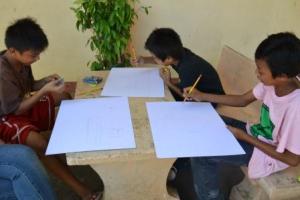
Triggered by emotion, bright colors and their preference for happiness and excitement, the children ages 3-12 years old created a total of 100 drawings, essays and poetries. Crayon dreams encouraged the children to open up and use their soaring imaginations in different ways. The kids were asked to explain some of their drawings. One of the child art participant, a grade 6 pupil said, “in drawing ko daytoy gapu ta kayat kunto ti agbalin nga policeman tapnu matiliw ken maibalud dagiti agtaktakaw ti gobyerno, dagiti ti criminal ken agpalpaltug ti kalsada” (I draw this because I wanted to become a policeman someday and arrest corrupt government officials, criminals and gun for hires). Likewise, a grade 4 pupil describing her work believed that by becoming a Supreme Court Justice she would have the opportunity to help the country in the future.
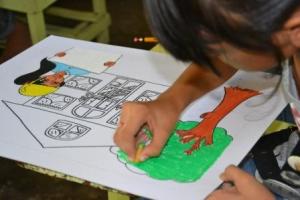
According to http://www.users.totalise.co.uk/~kbroom/lecturelist.htm ‘the elongated arms, hands, faces, and distorted shapes and lines in their drawings indicate the child’s interests and awareness to concept forming, thinking, awareness of feelings and perceptual development.’ The site deduced that child art is all about concept formation and meaning through exaggeration.

Sublime thoughts, heroism, sacrifice, service, helping the family, justice, fighting criminality, poverty, building a house, believing in oneself echoed in most of the children artworks. Most of their artworks demonstrated individuality, creativity and imagination.
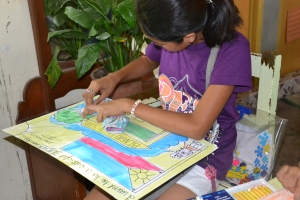
Also, we had the opportunity to meet and discuss with the teachers, school principals and supervisors about the status of arts education in public schools. We took note of the issues affecting arts education in the schools concerned namely the Bingao Elementary School (San Nicolas), San Nicolas Central Schools (San Nicolas) and Gabu Elementary School (Laoag City). Issues and concerns were the lack of arts education teach time and facilities, lack of musical instruments, shortage of teachers trained in the arts, costumes for theater, volunteers, art materials like crayons, colored chalks, pencils, clays, expensive art materials, lack of art books, etc.

The experience gave us the opportunity to learn and appreciate the arts and creativity of the child. The spontaneity of children’s art was remarkable.

As one arts and creativity blogger put it, “child art, like most child behavior, is direct and uncensored. A young child doesn’t critique his work – he paints freely and with pleasure, enjoying the fine and gross motor experience of moving paint over paper and watching lines, shapes and colors come to life. Art puts a child in the “driver’s seat” and provides freedom: the freedom of choice, thought and feeling.” (http://artandcreativity.blogspot.com/2006/09/what-is-child-art.html)
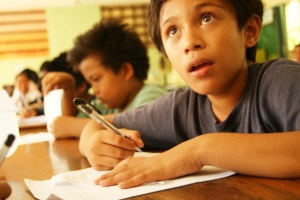
Anna Reyner, a renowned professor in child arts suggested the following to encourage creativity when organizing child arts projects:
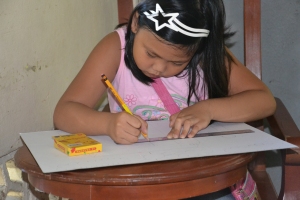
Take time with a child’s art
Show respect for the art and the artist’s process
Comment on lines, shapes and colors: “I see you used three colors.”
Show curiosity: “How did you get this effect here?”
Comment on changes: “You’re drawings look bigger these days.”
Ask open ended questions: “Will you tell me about your picture?”
Provide fuel for creativity: “What other materials do you need?”
Collect recycled boxes, tubes, lumber scraps. Make 3-D creations
Provide a variety of drawing, painting and clay materials
Avoid coloring books

And of course, parent involvement is essential in nurturing child creativity.
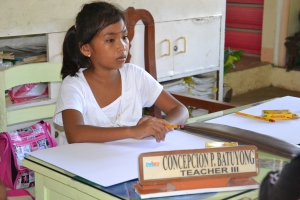
Let us nurture our children with positive thoughts and sublime ideas!

Thanks to Angel Raquino, Darwin Cadiz, Jennifer Andres, Lorie Jane Dancel for the amazing photos! Ms. Eva Tacata, Gilbert Gasmen, Sheryl Delacruz, Jennifer Andres and to all the Humanities students of Northwestern University of SY 2011 Good Job!, Mr. Rakesh Handa, a local entrpreneu for sponsoring erasers, snacks.



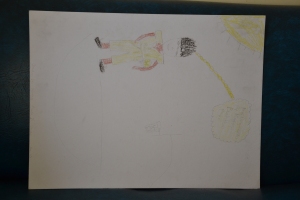


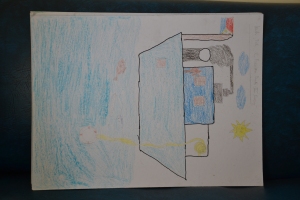
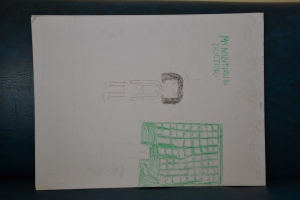




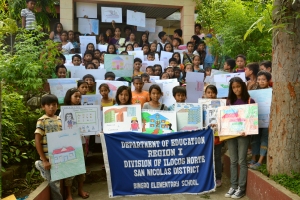
I will be uploading more photos soon…



























